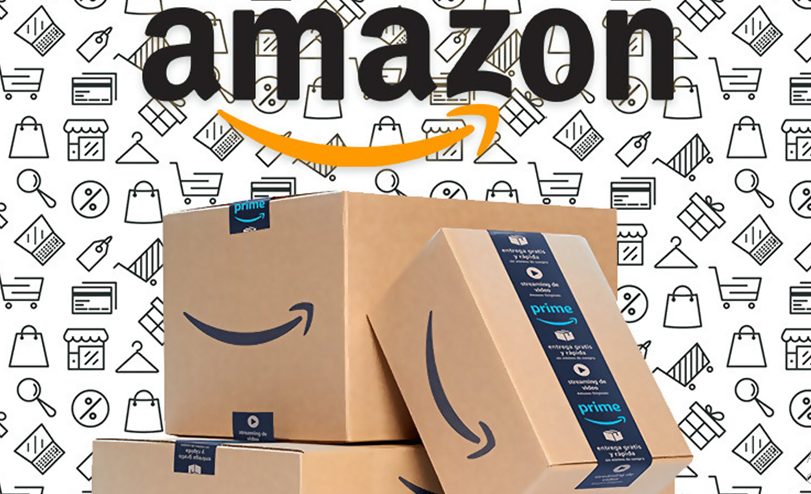Whether you are a brand or a seller, everybody does have the same question – “how to get the bigger piece of the lucrative Amazon pie?”
According to the statistics generated by SellerMotor.com, a top Amazon tools&services provider, it is estimated that by 2022, online retail revenues will surpass $638 billion in the US alone. While you prepare your 2020 Amazon marketplace strategy, taking into account operational functions, advertising, inventory, and pricing, capitalize on what didn’t worked and what did this year to update that strategy accurately.
Needless to say, Amazon is the spearhead in online sales, with no hint of deceleration anytime soon. With 2020 just around the corner, many sellers and brands are asking themselves how they can get the most out of their Amazon business.
Well, as said before, it starts by acknowledging the hurdles and issues sellers face and understanding Amazon’s key areas of opportunity.
In this post, we will be discussing the same to help you get a better insight into what Amazon has to offer to its sellers and brands in 2020.
Let’s get started.
#1 Acceleration of Changes in Advertising Capabilities
For 2020, marketers expect that there will be a continued acceleration of alterations in Amazon’s advertising capabilities that it makes available to the brands.
The changes can be seen already with additional Sponsored Brand Placements, enhanced auto-targeting for Sponsored Products, product attribute targeting, Sponsored Products retargeting, Sponsored Products replacing PDA in detail ad placements, and proliferation of stores, video, and DSP.
This is the beginning of the e-commerce giant’s effort of creating the most powerful and robust advertising platform for brands and sellers.
For more advanced targeting, access to off-Amazon customers, mobile optimization, custom videos, and audience segmentation, we expect that modifications will come quickly in 2020.
#2 Leveraging Information
Amazon has long been using insights on customer behavior to make market predictions. It will continue to leverage information on everything it touches, from sellers to industries, and of course, customers. This is what makes them the prime in the e-commerce market. Amazon will look to leverage technologies across different sectors and industries to attract users to their online platform through quick delivery times and ease of use. As a seller, you could not afford to lose this opportunity. Amazon has to become the go-to marketplace for the majority of the customers across the globe. Thus, they are increasing efficiency and improving customer experience. You also need to increase your efficiency and improve product quality in order to stay in business with Amazon. Amazon will not be taking any risks considering customer dissatisfaction. It has already provided you with a pool of customers. It is up to you how you take it from here.
#3 Merger with Social Media
The e-commerce giant will continue to make a push towards merging online retail and social media, especially when you look at what they are doing with Amazon Scout. Amazon Scout is a Pinterest-style take on user recommendations and collecting user data. This is great news for sellers, as Amazon will try to push users towards products that they are more likely to purchase.
However, this will make the job a bit difficult for the sellers since it will require them to have a highly optimized product listing on Amazon. So, it is important to understand the trending keywords, related search queries, and ways to rank your items for the most relevant keywords. All these will be a key differentiator between those who didn’t succeed and those who did.
#4 Online Grocery
According to market experts, grocers having omnichannel marketing will have the majority of the online food and beverage sales in the coming years. Amazon already knows this and has started making aggressive moves in the online grocery sector.
In 2017, Amazon acquired Whole Foods Market. It is clear that the e-commerce giant will be leveraging this aspect for its online grocery venture. At present, online grocery only accounts for only 3% of food and beverage transactions across the globe. But, experts project that with the development and competition in the industry, it will increase to 4.5% by 2024. Currently, Walmart is Amazon’s biggest competition in this aspect. Walmart is the market leader when it comes to online grocery. It accounts for 26% of online grocery transactions in the US. With Amazon only having 500 Whole Foods Market locations across the country, it will be expanding its reach. This doesn’t seem to bother Amazon that much because it has two most powerful tools as its ally – online traffic and customer data.
#4 Third-Party Sellers Rule the Amazon Sales
According to reports, third-party sellers do more than 50% of all Amazon sales. They continue to flock to Amazon. This trend has seen ascending growth over the years, and one can expect the same in 2020 and the coming years. More and more sellers are operating on Amazon as direct-to-consumer businesses, rather than handing over the operations to Amazon. This is great news for new sellers who want to establish a strong brand on Amazon.
However, there is a backlash with this strategy. While you may get greater control and ownership over your business, you may struggle with poor seller service and the ever-changing marketplace. If you are a third-party seller on Amazon, then you are on your own if you don’t acquire Amazon’s services.
#6 More Brands
With the rate at which Amazon is growing, it can be said that it will experience an influx of more sellers. There are already 54% of brands on the platform and according to the experts, it is predicted to reach 74% in the next five years.
Brands have realized that being on Amazon gives them great selling potential. Moreover, they believe that by selling on the platform, they can acquire new customers. This is the main reason why they are trying to develop a healthy relationship with Amazon so that they can get in front of bigger audiences.
Considering this, Amazon will be simplifying its business models for all the sellers.
What this means for Amazon sellers and brands?
Amazon is a leading platform filled with opportunities for brands and sellers from just every industry. However, it is also becoming a place where sellers looking for easy ways to make passive income will no longer find success. Thus, it is extremely important to keep up with the trends and find new ways to face competition.
Also, use the power of technology from some amazon seller tools like SellerMotor can help you make better business decision in the days to come.
If you have any queries regarding the trends we discussed, feel free to ask us.





